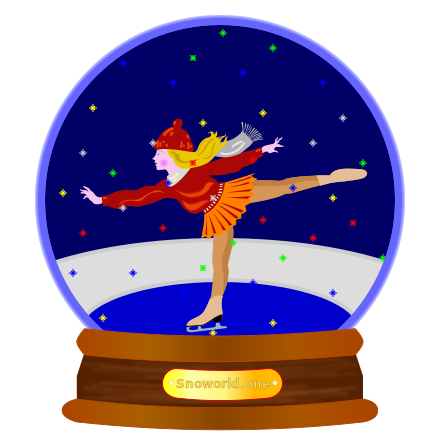
P-pop is commonly used to refer to Pilipino idols, or P-idols, but did you know these are not interchangeable?
P-pop is an umbrella terminology for all music composed or performed by a Filipino. On the other hand, idols are acts commercialized and marketed for their attractiveness and personality; and to sell dreams 1.
What is P-pop?
P-pop, or Pinoy Popular music, encompasses all music composed or performed by a Filipino. It is not the successor to OPM (“Original Pilipino Music”) and neither is it a subgenre of it. P-pop is simply another term for the entirety of Pinoy music regardless if it is mainstream, indie, underground, from Filipinos abroad, or was performed by a foreigner.
There is a big overlap between pop music as a genre and pop music as popular music. Just remember that pop music since the mid-1950s has usually been identified as the music and the musical styles that are accessible to the broadest audience
2 (emphasis mine).
An in-depth look about P-pop was discussed in What is the difference between P-pop and OPM?
BINI performs ‘Born To Win’ at the Uplive Worldstage Grand Finals!
The work shown above is Copyrighted to ABS-CBN Entertainment.
All P-idols are P-pop but not all P-pop are idols.
What is an idol or P-idol?
Most who are fans of idols assume it originated from K-pop, or Korean Popular music, and like most assumptions it is incorrect. The idol culture started in early 1930s Japan, although it was only in mid 1960s that the word idol was first used as a label for this particular type of entertainers.
History of idol culture
The year was 1933, actor Korema Arima (有馬 是馬) was on a tour in Kamaishi City (釜石市) when he scouted 13-year old Matsuko Ashita (あした まつこ / 明日 待子) to be an actress in the Moulin Rouge Shinjuku (レッドミル新宿区) theater in Tokyo (東京都). With her captivating smile, unmatched beauty and cuteness, and natural talent as an entertainer, she immediately rose to stardom. People visited the Moulin Rouge Shinjuku (レッドミル新宿区) theater to watch and interact with her.
She also caught the attention of major companies and received offers to be featured in advertisements, posters, signboards, and to star in films. By 1946, she made her debut as a singer with her song Tanoshiki Ashita (楽しき明日; Happy Tomorrow) under King Records (キングレコード株式会社). In today’s norm she was undoubtedly the very first idol and she laid down what this type of entertainer should be.
However, it was not until 1962 when the first idol trainee system was developed. It is a set of training programs where a talent starts young and trained in singing, dancing, and acting, until the company deems them ready for debut. Japanese-American businessman, talent manager, and founder of Johnny & Associates (株式会社ジャニーズ事務所) Kitagawa Hiromu (喜多川 擴), or known professionally as Johnny Kitagawa (ジャニー喜多川), was credited for developing it.
ALAMAT - ‘kasmala’ (Official M/V)
The work shown above is Copyrighted to ALAMAT.
Two years later, the 1964 French movie Cherchez l’idole, or Aidoru o Sagase (アイドルを探せ; Find an Idol), was released in Japan and one of the star-studded cast was Armenian-Bulgarian-French yé-yé singer-songwriter and actress, Sylvie Vartan. Vartan’s adorable youthful looks, singing talent, and elaborate dance performances, captivated the nation. By November 1964, Japanese mass media started to label any act projecting a cute, innocent, and jolly aura and with talents in singing, dancing, and acting, as idols. 3
By 1996, the founder of SM Entertainment (SM 엔터테인먼트) brought the Japanese idol trainee system to Korea and fine-tuned it for the Korean culture and entertainment industry. This is what is known as cultural technology which included detailed guidelines on how to bring the then new K-pop idol industry to the global market. 4 5
Defining idols
According to Tatsuo Inamasu (いなます たつお / 稲増 龍夫), a Japanese sociologist and psychologist specializing in social psychology and media culture theory, idols are people who share their growth process with their fans and play an active role in the charm of their very existence
(machine translation of 成長過程をファンと共有し、存在そのものの魅力で活躍する人物
). 6
Japan Info described idols as entertainers who start young, are always cute, and are often trained to sing, dance, MC, voice act, entertain, model, and play musical instruments. They are not just seen as entertainers, they are also regarded as role models for young people. An idol is a reflection on society, a picture of the ideal Japanese young citizen, and as such their image must be flawless. 7
Music idols are entertainers—generally from 12 to 25 years old—whose visual aesthetics are commercialized and marketed to bring happiness to and keep a close relationship with their fans. They undergo intensive training in singing, dancing, and acting, as well as in developing their personality and social skills to be an approachable and ideal celebrity their fans dream [them] to be.
UGG (U Go Girls) — Dati [Official Music Video]
The work shown above is Copyrighted to Viva Records.
Conclusion
Is this an important distinction the industry and fans should remember? Yes. In the Japanese and Korean music industries, J-pop and J-idols, and K-pop and K-idols, are often used interchangeably by foreign fans yet within their respective nations they make a distinction between idols and non-idol acts.
Similarly, P-pop and P-idols are often used interchangeably but should not be the case within the Philippines and the Filipino diaspora. All Filipinos love music more than any nation on Earth and, as of this post, majority of P-pop acts are either bands or solo acts who are not idols as defined.
Idol or not, a music composed or performed by a Filipino is P-pop but not all P-pop acts are idols.
The next question is: when did the P-pop idol industry begin? It will be answered in the next article.
Part of series: P-pop and Idols
LiveAbout: Pop Vs. Popular Music ↩︎
Wikipedia (en): Japanese idol: 1960–1980: Post-war era and idol beginnings ↩︎
Wikipedia (en): Korean idol ↩︎
Wikipedia (en): Cultural technology ↩︎
Japan Info: Exposing the Dark Side of Being a Japanese Idol and the Japanese Entertainment Industry ↩︎


